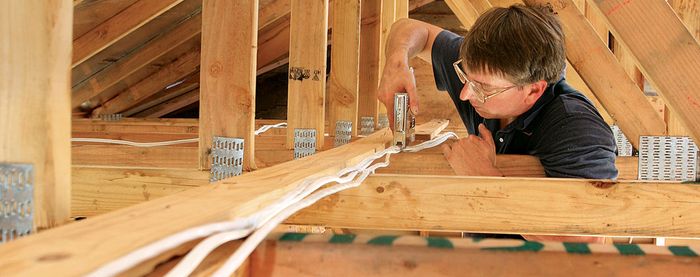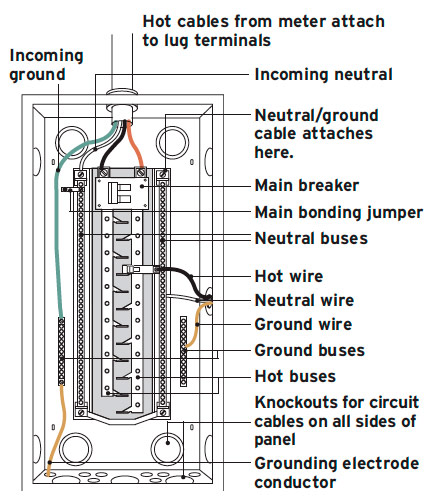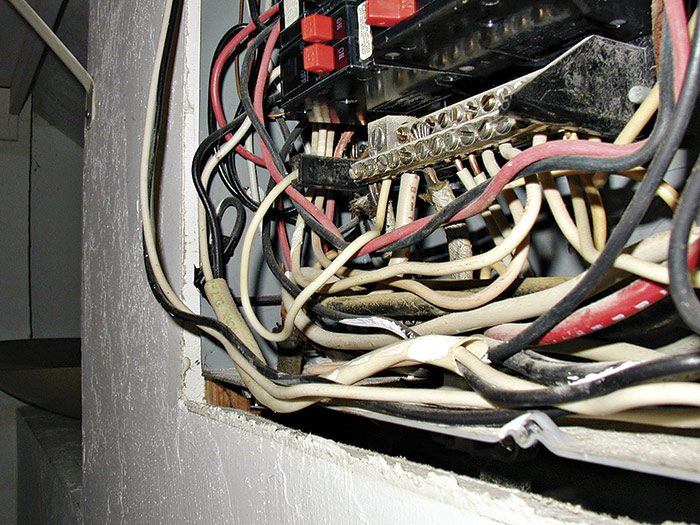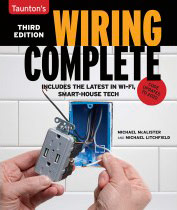Service Panels
These boxes full of circuit breakers or fuses distribute incoming power to wiring circuits throughout the house.
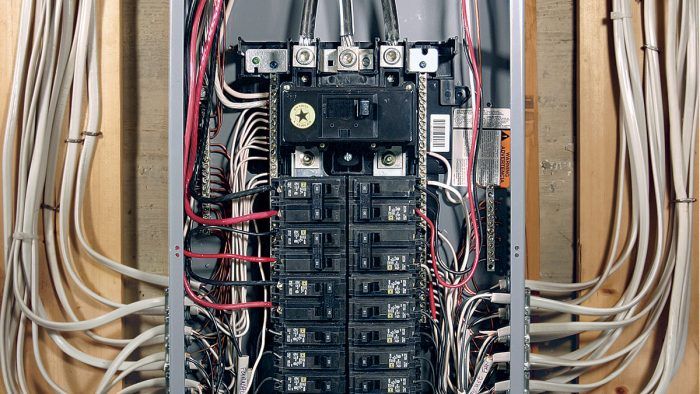
At the service panel, the two hot cables from the meter base attach to lugs or terminals on the main breaker. The incoming neutral cable attaches to the main lug of the neutral/ground bus. In the main panel, neutral/ground buses must be connected together, usually by a wire or metal bar called the main bonding jumper. In subpanels and all other locations downstream from the main service panel, ground and neutral components must be electrically isolated from each other.
In a main fuse box, the hot conductors from the meter attach to the main power lugs and the neutral cable to the main neutral lug. Whether the panel has breakers or fuses, metal buses run from the main breaker/main fuse. Running down the middle of the panel, buses distribute power to the various branch circuits, either through fuses or through breakers. The neutral/ground buses are long aluminum bars containing many terminal screws, to which ground and neutral wires are attached.
The service panel houses incoming cables from the meter as well as the breakers and wires that distribute electricity to individual circuits. At the service, neutral conductors (white wires), equipment-grounding conductors (bare copper or green insulated wires), the metal service panel, and the grounding electrode system (grounding rods) must be bonded together.
Each fuse or breaker is rated at a specific number of amps (15-amp and 20-amp breakers or fuses take care of most household circuits). When a circuit becomes overloaded or a short circuit occurs, the breaker trips or a fuse strip melts, thereby cutting voltage to the hot wire. All current produces some heat, and as current increases, the heat generated increases. If there were no breakers or fuses, and if too much current continued to flow, the wires would overheat and could start a fire. Amperage ratings of breakers and fuses are matched to the size (cross-sectional area, measured as “gauge”) of the circuit wires.
Play It SafeOnly a licensed electrician should work in a service panel—or even remove the cover. Even with the main fuse or breaker turned off, some of the parts inside a panel are always energized or hot (carrying voltage) and could electrocute you. Don’t mess with electric meters, either. Call the utility company to remove or install meters or to upgrade their service drop wires. To work safely on existing circuits, always turn off electrical power at the service panel, and use a voltage tester at the outlet to verify the power is off. |
The main breaker
All electricity entering a house goes through the main breaker, which is usually located at the top of a main panel. In an emergency, throw the main breaker to “off” to turn off all power to the house. The main breaker is also the primary overcurrent protection for the electrical system and is rated accordingly. (The rating is stamped on the breaker handle.) If the main breaker for a 200-amp panel senses current that exceeds its load rating, the breaker will automatically trip and shut off all power.
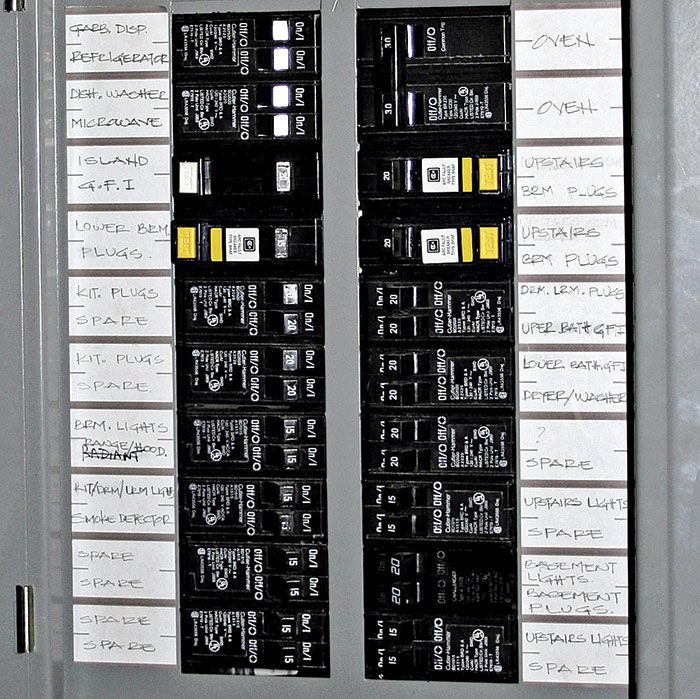
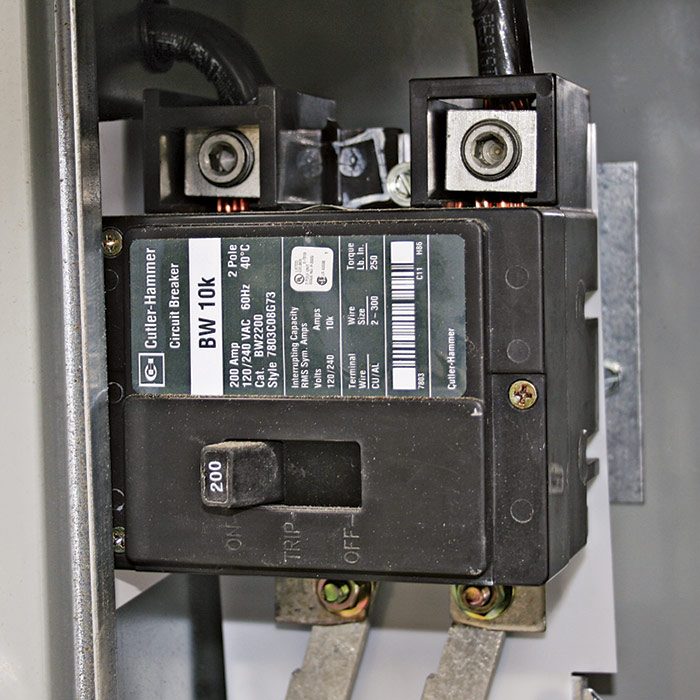
Meter–mains
Increasingly common are meter–mains, which house a meter base and a main breaker in a single box. Meter–mains allow a homeowner to put the main breaker outside the house, where it can be accessed in an emergency—if firefighters need to cut the power to the house before they go inside, for example. When meter–mains are used, electricians often locate a panel with the branch circuit breakers (called a subpanel) in the garage or another centralized location inside that is easy to access, such as a laundry room.
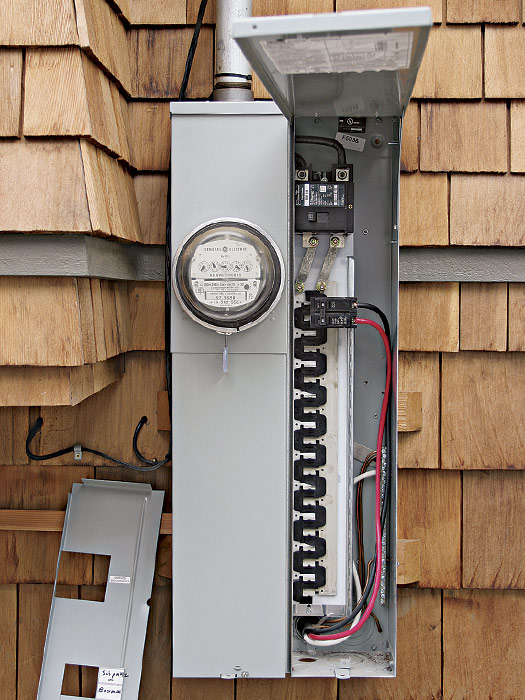
Fuse boxes
Many older homes still have fuse boxes. Fuses are the earliest overcurrent protection devices, and they come as either Edison-type (screw-in) fuses or cartridge (slide-in) fuses. Edison-style fuses are more common. They have little windows that let you see a filament. When the circuit has been overloaded and the fuse is blown, the filament will be separated. A blackened (from heat) interior could mean a short circuit—a potentially dangerous situation calling for the intervention of a licensed electrician. The less common cartridge fuses are used to control 240v circuits and are usually part of the main disconnect switch, or serve heavy-duty circuits for an electric range or a clothes dryer.
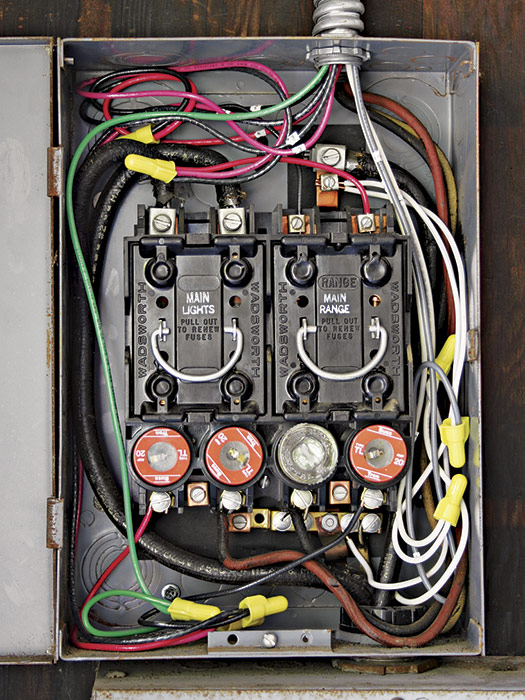
Excerpted from Wiring Complete, 3rd Edition (The Taunton Press, 2017) by Michael Litchfield and Michael McAlister
Available in the Taunton Store and at Amazon.com.
